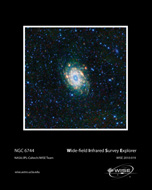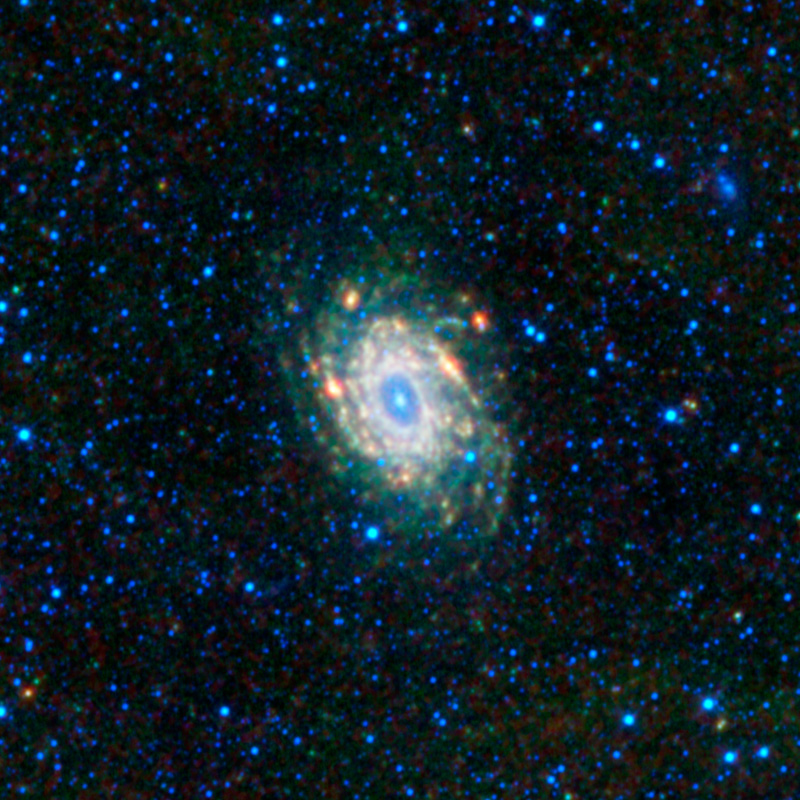



|
June 4, 2010 - A Sibling of the Milky Way This image of spiral galaxy NGC 6744 from NASA’s WISE (Wide-field Infrared Survey Explorer) is a mosaic of frames covering an area 3 full Moons tall and 3 full Moons wide (1.56 x 1.56 degrees). It is located in a constellation in the Southern sky, Pavo, whose name is Latin for peacock. There are relatively few large spiral galaxies in the local Universe (within about 40 million light-years of the Local Group of galaxies). At a distance from our Solar System of about 30 million light-years, NGC 6744 is one of the galaxies in the local Universe most like the Milky Way. So if there are observers somewhere in this sibling galaxy looking back at the Milky Way they might see a very similar image. Its disk is about 175,000 light-years across, larger than the Milky Way Galaxy. So it is kind of like a big brother of the Milky Way. It has an elongated (barred) core and distinct spiral arms. The spiral arms of the disk are the sites of star formation within the galaxy and are very dusty. Dust and star formation go together hand-in-hand. Dust in star forming regions is relatively warm (temperatures of hundreds of Kelvins) and shows up as green and red in this infrared image from WISE. Throughout the disk and core are many, many older generations of stars whose temperatures are in the thousands of Kelvins. These stars are color-coded blue and cyan in this image. This image was made from observations by all four infrared detectors aboard WISE. Blue and cyan represent infrared light at wavelengths of 3.4 and 4.6 microns, which is primarily light from stars. Green and red represent light at 12 and 22 microns, which is primarily emission from warm dust. Image Credit: NASA/JPL-Caltech/WISE Team |
|||||||||||||||||||
|
|||

